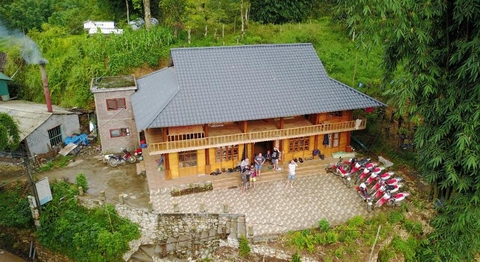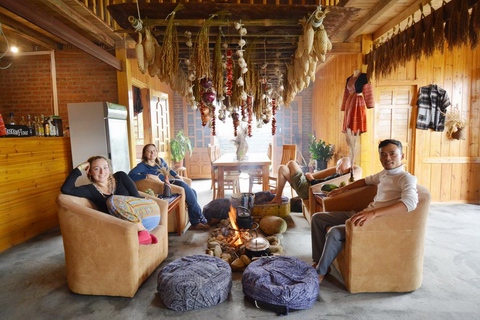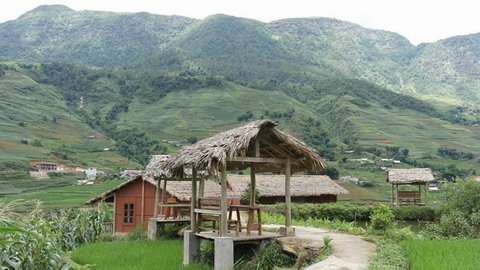|
Many
travelers want to spend a few nights at homestay to be
closer to the daily life of locals during a
trip to Vietnam.

In fact, spending the night with the locals does not just
mean sleeping. Above all, it is time to meet, observe and
immerse oneself in everyday life or even share a meal with
the hosts. You will have the opportunity to discover their
way of life, their tradition, almost unchanged for
centuries, and especially learn to cook Vietnamese
specialties.
You may be interested in:
►►► Train tickets to Sapa
►►►
Private tours to Sapa
►►►
Tours to Sapa and Bac Ha by car
But, before deciding to
spend the night at the homestay, it
is necessary to understand what you will meet while sleeping
in a traditional house. When we spend the night at the
homestay, How to do to adapt to the life of the villagers.
Some may be satisfied with this comfort, yet others may
complain of lack of comfort. That's why if you decide to
experiment at night with the locals in Vietnam please be
aware of something:

1.Normally, these are wooden houses, bamboo most often on
stilts depending on the region. In most cases, the houses
are on stilts accessible by stairs. This is the lifestyle of
high mountain minorities in order to avoid the risk of
probable floods and aggressive animals. The big room uses
the common space. These houses are more or less decorated,
more or less "beautiful" depending on the ethnicity and
social level of each family.
2. You will be welcomed by the hosts. The family cooks the
meals for you themselves, you obviously have the opportunity
to attend the kitchen and participate if you want. This is
undoubtedly the opportunity to learn how to cook the
country's specialties and you will have the joy of eating
with your family.
Normally, we sit in a circle, sitting on the floor to share
the meal with the host family. Depending on the houses,
seasons and families, it may be that the meal is taken
elsewhere, such as under the house on stilts, we sit
together around a table on chairs.

3.The bathrooms are outside the house. They are quite basic
but practical for the minimum living with a shower and
toilet in European style. They are tiled and most are
equipped with an electric water heater
4. You sleep in the main room all together on soft bunks and
with mosquito nets, and blankets in winter that are made
available to everyone. But, in the houses of the Mekong
Delta, you sleep on fairly typical beds. And most often
curtains can be stretched to give more privacy. It is
absolutely respect the customs of your hosts.

5. Because of the language barrier and the cultural
difference, a guide remains indispensable as an interpreter
who will accompany you to the local homes and help you to
contact them. Your stay will be friendly and more
interesting.

Where is this type of accommodation?
In Vietnam, you can easily stay and sleep homestay in the
mountainous areas such as Mai Chau, Nghia Lo,
Mu Cang Chai,
Sapa (in Lao Chai villages, Ta Van, Giang Ta Chai…),
Bac Ha,
Ha Giang, and the
Mekong Delta. Trying this unique
experience in Vietnam, you will feel well away from the
restlessness of the rest of the world.
You may be interested in:
►►►
Transfers Lao Cai to Sapa
►►►
Sapa train timetable
►►►
Visit Y Ty in Sapa
|